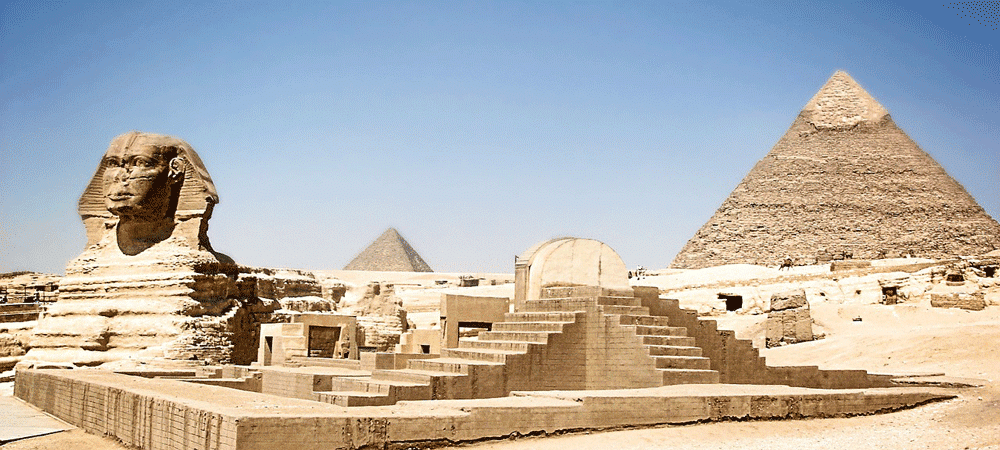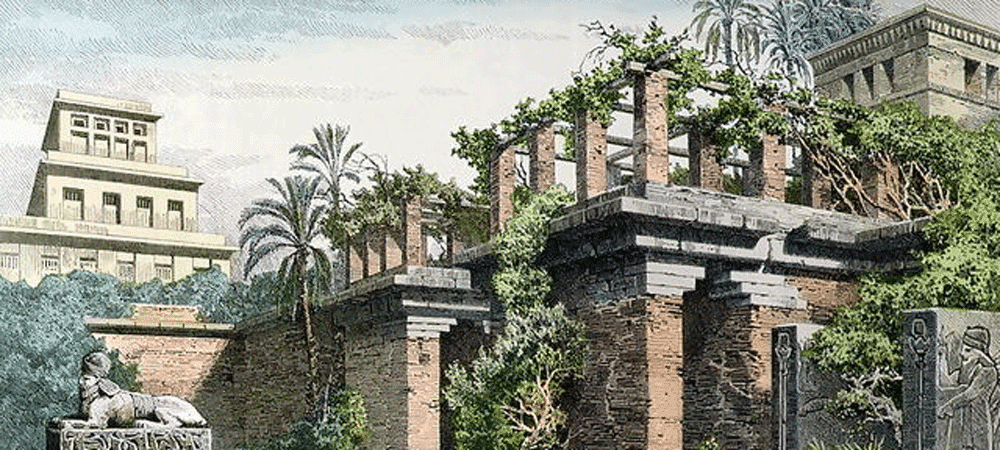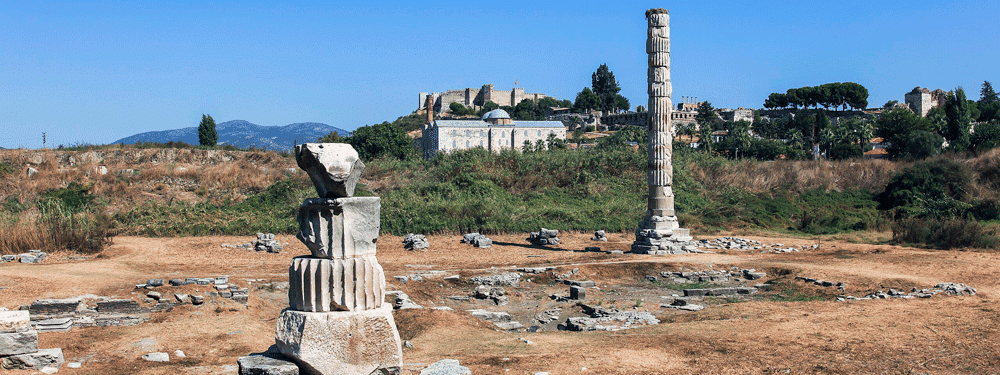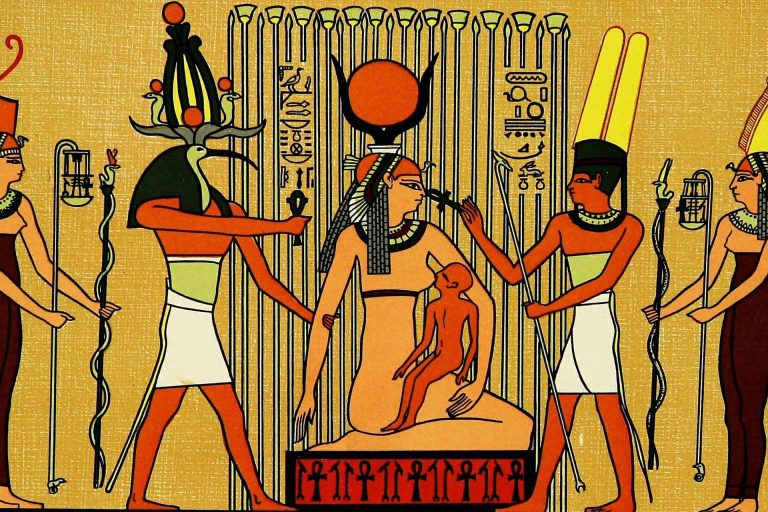A Guide to the 7 Wonders of the Ancient World
The 7 Wonders of the Ancient World are some of the earliest architectural and artistic achievements in human history. Built between 2800 BCE and 280 BCE, these magnificent structures and works of art showcase the ingenuity, ambition, and cultural significance of the ancient world. From the Great Pyramid of Giza to the lost beauty of the Hanging Gardens of Babylon, the 7 Wonders of the Ancient World were feats of engineering and design that captivated people for centuries to come.
Though most of these wonders no longer exist, they have been preserved in history through their documentation by early historians. This guide will delve into the history, construction, and mystery behind each of the 7 Wonders of the Ancient World, revealing their stories and legacies that continue to captivate modern audiences.

The Great Pyramid of Giza (Egypt)
The Great Pyramid of Giza, also known as the Pyramid of Khufu or the Pyramid of Cheops, is the oldest and only remaining wonder of the original Seven Wonders of the Ancient World. Constructed around 2580–2560 BCE during the reign of Pharaoh Khufu, it is an architectural and engineering marvel of ancient Egypt. The pyramid was built as a tomb for the pharaoh and was originally 146 meters (481 feet) tall, making it the tallest man-made structure in the world for over 3,800 years. It is composed of approximately 2.3 million limestone blocks, each weighing several tons, and is aligned with incredible precision.
The Great Pyramid is located on the Giza Plateau on the outskirts of Cairo, Egypt. The pyramid was constructed as a funerary monument to house the pharaoh’s body and to provide for his journey into the afterlife. The interior of the pyramid includes several chambers and passageways, such as the King’s Chamber and the Grand Gallery, which were designed with both religious significance and architectural precision. The pyramid’s construction techniques and exact purpose have been subjects of study and speculation for centuries. Despite extensive exploration, undiscovered chambers within the pyramid continue to intrigue researchers.

The Great Pyramid is the most famous of the original Seven Wonders of the Ancient World and is often considered the emblem of ancient Egypt. It stands as a testament to the ancient Egyptians’ engineering capabilities and religious and cultural beliefs. The pyramid remains a major tourist attraction and a symbol of the enduring legacy of ancient Egyptian civilization.

The Hanging Gardens of Babylon (Iraq, though debated)
The Hanging Gardens of Babylon are among the most enigmatic of the Wonders of the Ancient World, as their existence remains a matter of debate among historians. They are thought to have been built around 600 BCE by King Nebuchadnezzar II for his wife, Queen Amytis, who was homesick for the green hills and valleys of her homeland. The gardens are said to have been a paradise on earth, with lush vegetation, exotic plants, and streams of water cascading down terraces.

Despite extensive searches, no archaeological evidence of the gardens has been found in Babylon, leading some to suggest they may have been located in another city or were purely mythical.
Descriptions of the gardens suggest they were engineering and architectural marvels. They were said to have an intricate irrigation system that brought water from the Euphrates River up to the plants on the terraces. The gardens created a sense of awe and wonder, seeming to defy gravity and mimic the mountainous landscape of Queen Amytis’s homeland.
Ancient Greek historians such as Strabo and Philo described the gardens as a symbol of Babylon’s wealth, power, and sophistication, as well as its ability to conquer and tame nature through art and architecture.
Regardless of their actual existence, the Hanging Gardens of Babylon remain one of the most fascinating Wonders of the Ancient World, symbolizing the human desire to create beauty and transcend the ordinary through innovation and imagination. The mystery surrounding their existence and location continues to fuel debates and keep their memory alive in the hearts of historians and explorers alike.

The Temple of Artemis at Ephesus (Turkey)
The Temple of Artemis, constructed near the city of Selçuk (present-day Turkey) about 550 BCE, was a Greek temple dedicated to Artemis, goddess of the hunt, wilderness, and fertility. One of the most extensive and most beautiful of the Wonders of the Ancient World, it was supported by more than 100 marble columns, each over 18 meters (60 feet) tall, and featured intricate sculptures on its walls. In addition to its religious significance, the Temple of Artemis was a cultural and economic center, attracting visitors from across the Mediterranean.
Unfortunately, the temple’s existence was fraught with disaster and destruction. It was destroyed and rebuilt multiple times throughout history, with the most notorious incident occurring in 356 BCE when a man named Herostratus burned the temple to gain notoriety. While it was later reconstructed, the temple continued to decline due to invasions and earthquakes. Today, only a few columns and scattered remains of the Temple of Artemis remain, serving as a reminder of its former glory.

Behind the Mosque is the “Citadel of Ayasuluk”, a 6th-century Byzantine castle. / Roy Egloff, CC BY-SA 4.0, via Wikimedia Commons
The Temple of Artemis was one of the most artistic and architecturally significant of the Wonders of the Ancient World, reflecting the importance of religion and art in ancient Greece. The temple was a symbol of Ephesus’s prosperity and power, and its design and scale inspired other structures throughout history. Despite its tragic end, the Temple of Artemis remains an integral part of history, drawing tourists and scholars alike to marvel at its beauty and legacy.

The Statue of Zeus at Olympia (Greece)
The Statue of Zeus at Olympia is among the most awe-inspiring sculptures of the Wonders of the Ancient World. This masterpiece of Greek art was crafted by the master sculptor Phidias around 435 BCE. The statue, made of ivory and gold, stood over 12 meters (40 feet) tall, including the throne on which Zeus sat.
Phidias was the most distinguished sculptor of ancient Greece, and his creation of Zeus was the pinnacle of his career. The statue was housed inside the Temple of Zeus at Olympia, Greece. Zeus was portrayed seated on a large throne, holding a scepter in his left hand and a statue of Nike, the goddess of victory, in his right. The statue was designed to represent the king of the gods and to inspire awe and reverence.

The Statue of Zeus was a major attraction for visitors to Olympia, and it was seen as a symbol of Greece’s power and devotion to Zeus. The temple itself was an impressive structure, but the statue captured the attention of all who saw it. Ancient historians praised the statue’s lifelike details and size, as well as the skill with which it was crafted.
The statue was lost after it was moved to Constantinople and likely destroyed by fire in the 5th century CE. Despite its loss, the Statue of Zeus at Olympia remains one of the most important and influential works of ancient art. It was one of the Seven Wonders of the Ancient World, and it remains a symbol of the power and skill of Greek art.

The Mausoleum at Halicarnassus (Turkey)
The Mausoleum at Halicarnassus is an ancient funerary structure located in Bodrum, Turkey, and built around 350 BCE. Built as a tomb for Mausolus, the Persian satrap of Caria, and his wife and sister, Artemisia II, the mausoleum was one of the tallest structures of its time, standing approximately 45 meters (148 feet) tall. The structure blended Greek, Egyptian, and Lycian architectural styles and was exquisitely decorated with elaborate friezes and statues by four Greek sculptors. It is one of the Seven Wonders of the Ancient World and the most intact of the seven.
As a funerary monument, the Mausoleum at Halicarnassus symbolized the power and wealth of Mausolus’s dynasty. It was not only a resting place for the remains of the king and his wife but also an architectural masterpiece that showcased the ancient Greeks’ artistic and engineering capabilities. The tomb itself was crowned with a stepped pyramid and a statue of a chariot drawn by four horses, a testament to the grandeur of Mausolus’s reign and the divine nature of the ruling dynasty.

The mausoleum remained standing for over 1,500 years before suffering damage from earthquakes and other natural disasters. In the 15th century CE, it was further damaged by the Knights of St. John, who used the stones to reinforce a nearby castle. Despite this, the Mausoleum at Halicarnassus is still considered one of the most unique and influential of the Seven Wonders of the Ancient World, and its name has been passed down to refer to large tombs and mausoleums in general.

The Colossus of Rhodes (Greece)
Erected in 280 BCE, the Colossus of Rhodes was a statue built on the island of Rhodes. The statue was over 33 meters (108 feet) tall. It is made out of bronze and represents the Greek sun god Helios. The statue commemorates Rhodes’s victory over a siege led by Demetrius I of Macedon. The Colossus of Rhodes was one of the tallest statues of the ancient world and one of the Seven Wonders of the Ancient World. The statue depicts the ancient Greek sun god Helios, shown as he is about to put his weight on the right foot.
Rhodes was a Greek island, and as such, it is a rare instance of one of the Wonders of the Ancient World found outside the territories of the current Middle Eastern and North African region. The Colossus of Rhodes was built near the harbor of the island. It was built on a stone foundation.
The Colossus of Rhodes was built with large iron plates and bronze plates. The statue, constructed in 292 BCE by the sculptor Chares of Lindos, was destroyed by an earthquake in 226 BCE. The Greek historian Pliny the Elder wrote about the Colossus and its destruction. It is said that over 900 camel loads of this Wonder of the World were carted off and sold.

The statue’s height has been calculated at approximately 33 meters (108 ft). One of the Seven Wonders of the Ancient World, the Colossus of Rhodes would be considered one of the tallest statues in history if it still stood. Although the Colossus of Rhodes is gone, several replicas have been made, the most famous being the Statue of Liberty. The statue was built to withstand a siege by Demetrius I of Macedon, and its presence at Rhodes’ harbor was a symbol of the island’s wealth and naval power.

The Lighthouse of Alexandria (Pharos of Alexandria) (Egypt)
The Lighthouse of Alexandria was constructed between 280 and 247 BCE on the island of Pharos to guide sailors safely into the busy harbor of the city of Alexandria. Estimates of its height have varied over time, but it was most likely between 100 and 130 m (330 and 430 ft) tall. It was one of the tallest buildings in the world for many centuries. The lighthouse was an essential aid to navigation for ancient ships entering the harbor of Alexandria, one of the most important ports of the ancient world.
The Lighthouse of Alexandria, as its name suggests, was one of the Seven Wonders of the Ancient World, and one of the most technologically advanced of all of the wonders. It served not only as a working lighthouse but also as a celebration of the city’s technology and wealth, as well as of the Ptolemaic dynasty. The lighthouse had a three-stage structure: a square base section, a cylindrical middle section, and a smaller tower topped by a fire. It was probably built at the order of Ptolemy I but was completed by his son, Ptolemy II.

Fire was the light source at night, and a large polished bronze mirror reflected sunlight during the day. The lighthouse was damaged by earthquakes between the 10th and 14th centuries, and eventually the ruins became an abandoned landmark in the sea. Recent research has located most of the lighthouse’s ruins on the sea floor, and underwater archaeological excavations are underway.
The lighthouse has had a global impact on the design of subsequent lighthouses, which were often modeled after it. It was a direct influence on the development of automated lighthouses and radio navigation aids, all of which have had a global effect on maritime navigation.
The Seven Wonders of the Ancient World Today
The Wonders of the Ancient World were a collection of remarkable feats of art, architecture, and engineering that continue to inspire awe and wonder today. These structures, which were built in various locations across the ancient world, represented the pinnacle of human achievement at the time and remain a testament to the ingenuity and creativity of the ancient civilizations that built them. Despite the passage of time and the loss of many of these wonders, their stories and significance have endured, and they continue to be celebrated as some of the most significant accomplishments of the ancient world.







